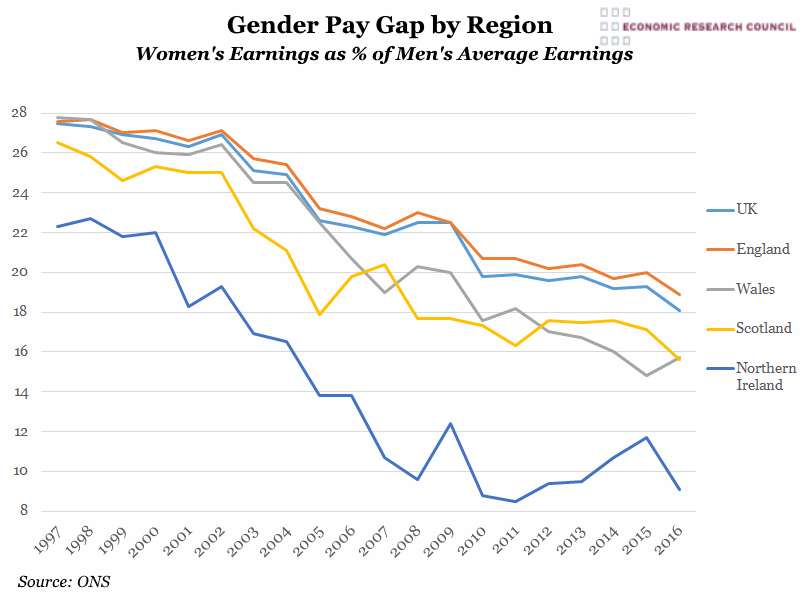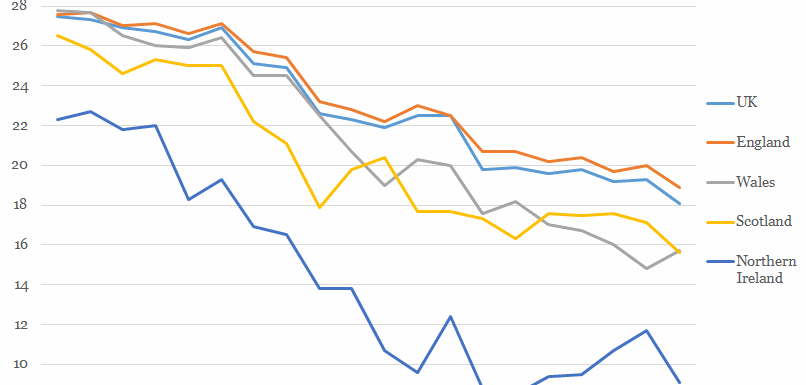
Summary
This Tuesday 4th April was ‘Equal Pay Day’, a date symbolically chosen in the USA for two reasons: it roughly represents the date when the average woman would need to work to, from 1st of January 2016, to match the average man’s 2016 earnings. Tuesdays are also significant in this respect, as it is the day of the following week until which women would need to work in order to earn the amount a man makes in one week. The chart shows that, since 1997, the pay gap has steadily reduced across all regions of the UK, reducing overall from 27.5% to 18.1%, a drop of around one third. With the exception of Scotland, women’s pay suffered comparatively worse than men’s following the 2008 recession. Northern Ireland, which has seen an increase in female public sector jobs, has the lowest pay gap in the UK, even when assessed more closely on a regional basis.
What does the chart show?
The chart shows the difference between men’s and women’s average hourly earnings as a percentage of men’s average hourly earnings split by country in the UK. This refers to employees on adult rates, combines full and part time data and is unaffected by absence. The data is from 1997 until 2016, rounded to one decimal place. Data from 2016 are still provisional at this stage. The ONS state there were slight discontinuities in the data in 2004, 2006 and 2011 for which two figures were given- the average of these two figures is presented here.
Why is the chart interesting?
PWC has estimated that at the current pace, it would take until 2041 to close the UK gender pay gap entirely. However it is noted that the UK does outperform the OECD and G7 average indicators on work opportunities for women. This week it becomes a statutory requirement for private companies with 250 employees or more to publish data on their gender pay differential, which may accelerate the UK’s path to gender pay parity. There is however some quite significant regional variation; for example, women in the West Midlands, who disproportionately occupy lower-wage sectors, would need an annual pay rise of 27% in order to match men’s earnings whereas in London this falls to 20%. By far the worst performing sector is the finance, according to PWC, whose research reveals that women in finance are paid 34% less on average than their male colleagues. This is echoed by the ONS data which show that among the top 10% of earners in 2016, the gender pay gap widens significantly to 18.8%.

